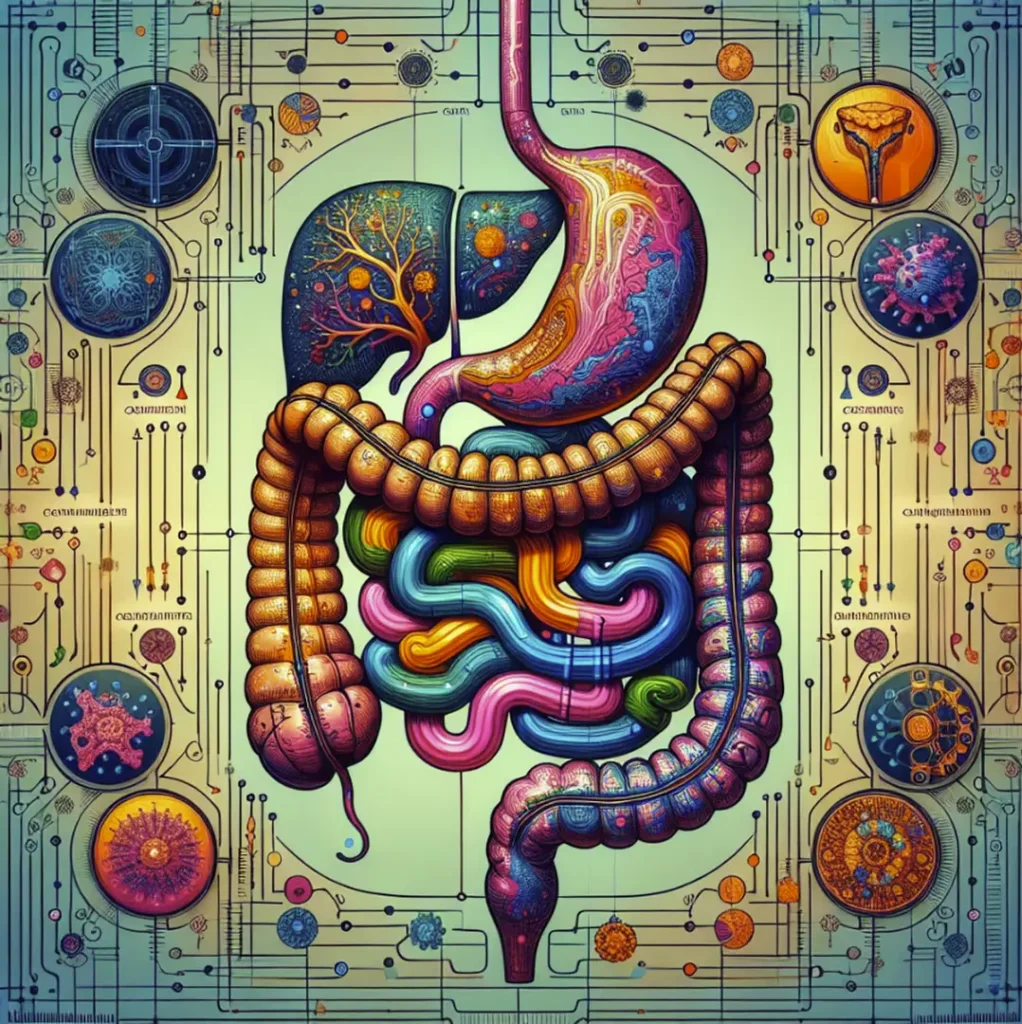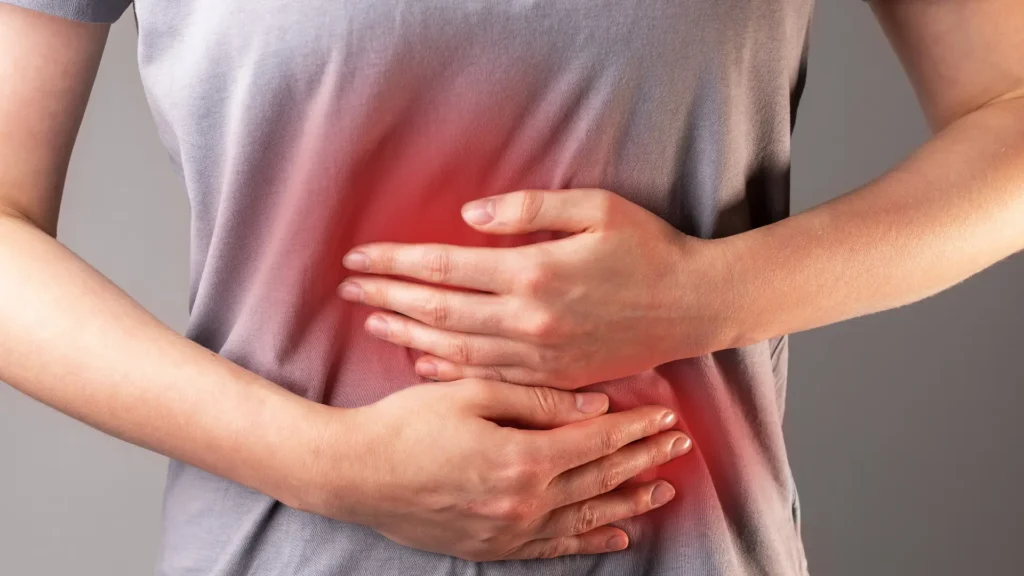Crohn’s disease, a type of inflammatory bowel disease (IBD), triggers swelling and inflammation in the digestive tract, leading to symptoms that can disrupt daily life. Imagine persistent abdominal pain, severe diarrhea, fatigue, and even complications that could require emergency attention. Finding effective Crohn’s disease treatments is not just about symptom relief. It’s a critical aspect of managing the long-term consequences of the disease.
As symptoms can be intermittent and unpredictable, patients need therapies that not only address acute flare-ups but also help maintain remission.
Today, we will be looking at Crohn’s Disease Treatments. Traditional treatments have centered around medication and surgery. Yet, due to the complexity of Crohn’s disease and its varied response to standard therapies, there is a growing interest in newer treatments that offer new hope to those living with this challenging condition.
As always, this articles serves as a guide. Please consult your family physician for more specified diagnosis.
1. Understanding Crohn’s Disease Treatments

Crohn’s disease is a chronic disorder that causes inflammation and swelling across various parts of the digestive tract. It’s not like food poisoning or stomach flu that comes and goes rapidly. This condition is persistent, causing long-term discomfort and a host of symptoms that we will discuss later.
Unlike Ulcerative Colitis, another major type of IBD that primarily affects the large bowel and surface layers of the bowel lining, Crohn’s disease can occur anywhere along the digestive tract, from the mouth to the anus. This makes it a more unpredictable and potentially debilitating condition.
The impact of Crohn’s disease on the digestive tract is severe. Depending on its location and severity, this inflammation might result in complications such as painful ulcers, fistulas (abnormal connections between different body parts), or even intestinal obstruction.
Bottom line? The effects of Crohn’s disease extend far beyond occasional stomach upset. It’s a serious condition that warrants our attention – understanding it is the first step towards managing it effectively.
2. Symptoms, Diagnosis, and Risk Factors of Crohn’s Disease
Crohn’s disease can cause various symptoms that significantly affect daily life. Some common ones include:
- Diarrhea and abdominal pain
- Fatigue and reduced appetite
- Weight loss
- Blood or mucus in stools
- Mouth ulcers and fever
- Pain or swelling around the anus
Perianal Crohn’s disease, which is a serious complication of the condition, can cause additional problems like strictures (narrowing), fistulas (abnormal tunnels), and scar tissue formation. It may lead to difficulties in passing gas or stool due to narrowing of the anus. Another distressing symptom is pus drainage from these tunnel-like formations.
Early diagnosis plays a crucial role in effectively managing Crohn’s disease. Doctors may use the following tests for diagnosis:
- Blood and stool samples: These help detect signs of inflammation.
- Colonoscopy or sigmoidoscopy: These procedures allow direct visualization of the intestine and help obtain tissue samples for biopsies.
- Imaging tests like MRI or CT scans: These are used to assess the extent of intestinal involvement.
The development of Crohn’s disease involves a combination of genetic and environmental factors. Some known risk factors include:
- Family history: Having close relatives with the condition increases the likelihood of developing it.
- Smoking: Cigarette smoking has been linked to a higher risk of Crohn’s disease.
- Dietary influences: Following a Western diet, which typically includes processed foods and high levels of fat, may contribute to the development of the disease.
In perianal Crohn’s disease, specific risks include severe scarring leading to fistula formation and inflammation resulting in abscesses.
Understanding these aspects is important for creating Crohn’s Disease treatment plans and minimizing the impact on affected individuals’ quality of life.
3. Crohn’s Disease Treatments: Conventional vs. Revolutionary Approaches
When dealing with Crohn’s disease, the most frequently prescribed conventional treatments are medications and surgery. Let’s delve into these a bit:
Medications
A range of drugs can be used to control inflammation and manage symptoms of Crohn’s disease. These may include immune system suppressants, biologic medicines, corticosteroids, and 5-aminosalicylates. Each of these medications functions in its own unique way to reduce inflammation and promote healing in the digestive tract.
Surgery
In some cases, when medication isn’t enough or complications arise, surgical intervention becomes necessary. This could involve removing or widening sections of the affected bowel. While surgery can provide temporary relief, it’s not considered a cure as Crohn’s disease often recurs after the operation.
Despite their effectiveness in many cases, these conventional treatments aren’t foolproof. Some patients don’t respond well to medication, while others may experience severe side effects. Surgery too carries its own risks and doesn’t guarantee a lifetime free from Crohn’s.
This has led to an increased interest in alternative or revolutionary treatments. These newer approaches aim to provide more personalized and effective strategies especially for those who have resistant forms of the disease. Whether it’s through dietary changes, oxygen therapy, or even fecal transplants, these revolutionary methods are pushing the boundaries of what we thought was possible for Crohn’s disease treatments.
Promising Revolutionary Crohn’s Disease Treatments
3.1. Nutritional Therapy
When it comes to managing Crohn’s disease, new and exciting treatments have started to emerge, giving hope to those dealing with this long-term condition. One of these treatments is nutritional therapy, which shows promise in fighting against fistulas commonly associated with perianal Crohn’s disease.
What is Nutritional Therapy?
Nutritional therapy involves using specific diets and supplements to reduce symptoms and promote healing in the intestines. Here are some key aspects of this approach:
Specialized Diets
Patients are exploring diets tailored to reduce intestinal inflammation. The Specific Carbohydrate Diet (SCD) and the anti-inflammatory diet are examples that some patients find beneficial. These diets focus on whole foods while excluding processed items and certain carbohydrates that may exacerbate symptoms.
Supplementation
Deficiencies in essential vitamins and minerals are common in Crohn’s disease due to problems with nutrient absorption. Supplements such as vitamin D, iron, calcium, and omega-3 fatty acids can be crucial in managing the disease and aiding recovery.
Fistula Healing
In perianal Crohn’s disease, where fistulas present a significant challenge, certain nutrients play a pivotal role in healing. For instance, amino acids found in protein are the building blocks for tissue repair, while zinc is known for its wound-healing properties.
Enteral Nutrition
Sometimes used as a primary treatment for Crohn’s disease, especially in children, enteral nutrition involves consuming liquid formulas that provide complete nutrition. This approach can give the bowels time to rest and has been shown to promote remission especially in cases of fistula healing.
Prebiotics and Probiotics
The role of gut flora cannot be overstated in Crohn’s management. Prebiotics (fibers that feed good bacteria) and probiotics (live beneficial bacteria) might contribute to maintaining or restoring gut health.
It’s important to remember that nutritional therapy should not be seen as a replacement for traditional medical treatments but rather as a complement to them. Working with a dietitian who specializes in inflammatory bowel diseases is crucial to ensure dietary changes are made safely and effectively.
Personalized Approach
Every individual with Crohn’s disease is unique, and their response to nutritional therapy can vary. That’s why it’s essential to create personalized dietary plans based on each person’s specific needs and tolerances.
As research continues to uncover the intricate connection between diet, nutrition, and Crohn’s disease, there is hope that nutrition can play a significant role in managing this condition more effectively. By incorporating scientifically-backed nutritional strategies into treatment plans, there is potential not only for symptom relief but also for promoting long-term intestinal health.
Remember: Always consult with your healthcare provider before making any significant changes to your diet or treatment regimen.
The search for innovative Crohn’s Disease treatments doesn’t end here; other options like Hyperbaric Oxygen Therapy (HBOT) are also being explored for their potential therapeutic effects on inflammatory bowel diseases.
3.2. Hyperbaric Oxygen Therapy (HBOT)
Hyperbaric Oxygen Therapy (HBOT) is another innovative form of Crohn’s Disease treatments that has shown potential benefits. Particularly for those patients who have seen minimal results from conventional treatments.
How does HBOT work?
This therapy involves inhaling pure oxygen in a pressurized room or tube. The principle behind it is fairly simple – by increasing the amount of oxygen in your blood, your body’s ability to regenerate damaged tissues and fight bacteria is enhanced.
The role of HBOT in reducing inflammation and promoting tissue healing
One of the significant challenges with Crohn’s disease is chronic inflammation, which can lead to complications like fistulas, especially in perianal Crohn’s disease. Here’s where HBOT comes into play.
Research indicates that HBOT can help reduce inflammation and promote tissue healing. When the body is subjected to this increased pressure, more oxygen can dissolve into the bloodstream. This enriched oxygen supply can then reach areas of the body affected by inflammation and stimulate healing processes.
A Complementary Treatment Option
It’s worth noting though, while promising, HBOT should not be considered as standalone Crohn’s Disease treatments. Rather, it should complement other treatments such as medication or nutritional therapy. As always, it is crucial to discuss any new therapy with your healthcare provider before beginning to ensure it’s suitable for your specific situation.
So yes, revolutionary treatments like HBOT hold great promise for improving the quality of life in individuals dealing with Crohn’s disease and promoting fistula healing as part of a comprehensive care plan.
3.3. Fecal Microbiota Transplantation (FMT)
Recognized as one of the revolutionary Crohn’s Disease treatments, Fecal Microbiota Transplantation (FMT) has gained attention for its unique approach to restoring intestinal health. The central concept behind FMT is the transplantation of fecal matter from a healthy donor into the gastrointestinal tract of a patient with Crohn’s disease. This procedure aims to reestablish a balanced gut microbiome, which is often disrupted in individuals with inflammatory bowel diseases.
How FMT Works
The process of Fecal Microbiota Transplantation involves collecting stool samples from a carefully screened donor, processing the samples in a laboratory, and then introducing the prepared fecal matter into the patient’s body through various methods such as colonoscopy, nasogastric tube, or capsules.
Potential Benefits of FMT for Crohn’s Disease
Here are some ways in which FMT may benefit individuals with Crohn’s disease:
- Restoring Balance: The gut microbiome is a complex ecosystem of bacteria that plays a critical role in digestion, immunity, and overall health. An imbalance, known as dysbiosis, can contribute to the inflammation seen in Crohn’s disease.
- Evidence of Efficacy: Research suggests that by introducing beneficial bacteria through FMT, it’s possible to reduce the symptoms of Crohn’s and even promote remission in some cases.
- Impact on Fistula Healing: Particularly for those suffering from fistulas, a common and painful complication of Crohn’s, FMT may support fistula healing by altering the microbial environment that contributes to their formation and persistence.
- Nutritional Therapy Synergy: Combining FMT with nutritional therapy could potentially enhance therapeutic outcomes, as diet also influences the makeup of the gut microbiota.
The feasibility and effectiveness of FMT continue to be explored through clinical trials and research studies. With its promise as a treatment modality, FMT adds another layer to the multidimensional approach required to tackle Crohn’s disease effectively.
3.4. Stem Cell Therapy
Revolutionary Crohn’s Disease treatments are taking an exciting turn with the advent of stem cell therapy, a branch of regenerative medicine aimed at harnessing the body’s own repair mechanisms. Here’s a closer look at how stem cells are changing the treatment landscape:
How Stem Cells Can Help in Crohn’s Disease
- Tissue Repair: Stem cells have the unique ability to differentiate into various cell types, offering new possibilities for repairing damaged intestinal tissue that is characteristic of Crohn’s disease.
- Immune Modulation: Beyond tissue repair, stem cells can help modulate the immune response, addressing the autoimmune aspects of Crohn’s and potentially reducing inflammation.
- Fistula Healing: For those suffering from perianal Crohn’s disease, where fistulas are common, stem cell therapy has shown promise in promoting fistula healing. This is particularly significant, given the limited efficacy of conventional treatments in these cases.
- Clinical Trials: Recent trials have demonstrated that injections of mesenchymal stem cells (MSCs) can lead to remission in a proportion of patients with refractory perianal fistulas.
By providing an innovative approach to treatment, stem cell therapy represents hope for many who have not found relief through traditional methods like nutritional therapy or medications. As research progresses, the potential of these treatments continues to unfold, offering a glimpse into a future where living with Crohn’s disease may become markedly more manageable.
Considering the Holistic Approach
Crohn’s Disease treatments extends beyond just addressing the physical symptoms; it’s about nurturing overall wellness. A holistic approach to treatment delves into both physical and emotional well-being, recognizing that a person’s lifestyle and mental health play critical roles in managing chronic conditions like Crohn’s.
Complementary Therapies for Symptom Management:
Acupuncture
This traditional Chinese medicine practice involves inserting fine needles into specific body points. It is believed to stimulate the body’s natural healing processes and has been used to help reduce pain and inflammation associated with Crohn’s disease.
Yoga
With its emphasis on gentle movement, breathing, and meditation, yoga can be a valuable tool for stress reduction. Managing stress is crucial for those with Crohn’s disease, as it can exacerbate symptoms.
By integrating these complementary therapies into their treatment plan, individuals with Crohn’s can potentially experience improved symptom management and a greater sense of control over their health. It’s always advisable to consult healthcare professionals before starting any new therapy to ensure it complements existing treatments effectively.
4 Crohn’s Disease Treatments: Emotional Support
Perianal Crohn’s disease presents a set of unique challenges that can profoundly affect an individual’s mental and emotional health. Dealing with persistent discomfort, the uncertainty of symptom flare-ups, and invasive treatments takes a toll that goes beyond physical health.
Psychological Support Is Essential
Understanding the Emotional Impact
Patients with perianal Crohn’s disease often experience heightened stress, anxiety, and depression due to the severity and intimate nature of their symptoms.
Tailored Mental Health Care
It is crucial to provide access to mental health professionals who understand the specific emotional burdens associated with this condition.
Peer Support
Engaging with support groups allows those affected to share experiences and coping strategies, fostering a sense of community and mutual understanding.
Integrating Psychological Care into Treatment Plans
- Healthcare providers should incorporate psychological evaluations as part of routine care for individuals with perianal Crohn’s disease.
- Developing personalized care plans that include therapy or counseling can significantly improve patients’ overall well-being.
Enhancing Quality of Life
By addressing both physical symptoms and emotional needs, patients can experience improved quality of life. Prioritizing emotional support helps individuals navigate the complexities of perianal Crohn’s disease with greater resilience and hope.
The integration of comprehensive care for perianal Crohn’s disease underscores the importance not only of managing physical symptoms but also nurturing mental strength and well-being.
Crohn’s Disease Treatments: Current Limitations and Future Outlook
Despite the impressive strides in Crohn’s Disease treatments, there are still some limitations. However, researchers are actively working to overcome these barriers and improve the outlook for patients. Here are some areas they are focusing on:
Personalized Medicine
One exciting area of research is personalized medicine, which involves identifying individual genetic markers that can help predict how someone will respond to a particular treatment. By understanding a person’s unique genetic makeup, doctors may be able to tailor therapies specifically to their needs.
Targeted Therapies
Another promising avenue of exploration is targeted therapies. These are drugs that are designed to act on specific pathways involved in the inflammatory process of Crohn’s disease. By targeting these specific pathways, researchers hope to develop treatments that are more effective and have fewer side effects than current options.
Gut Microbiota Modulation
The role of the gut microbiota in Crohn’s disease has been a subject of much interest in recent years. Researchers are studying how prebiotics, probiotics, and diet changes can help maintain remission and promote overall gut health. By understanding the complex interactions between our bodies and the bacteria that live within us, scientists hope to uncover new ways to manage this condition.
The future of Crohn’s disease treatment looks promising with ongoing research in several areas:
- Innovative Biologics: New classes of biologic medications that offer different mechanisms of action compared to current options.
- Microbiome Research: Investigations into the role of gut bacteria offer potential for breakthroughs in both treatment and prevention.
- Nanotechnology: The use of nanoparticles to deliver medication directly to inflamed tissues offers a promising avenue for research.
These advancements aim to improve not just the management of symptoms but also the overall quality of life for individuals battling Crohn’s disease. As research continues to unveil new insights into this complex condition, patients can look forward to a future with more effective and less invasive treatment options.
Conclusion
Navigating the complexities of Crohn’s disease treatments requires an open mind and proactive engagement with healthcare professionals. Revolutionary treatments, from nutritional therapy to stem cell intervention, are changing the landscape of care for those affected by this challenging condition.
Here are some key takeaways for patients:
- Consider innovative treatment options as part of your overall management plan.
- Collaborate closely with your healthcare providers to customize your treatments based on your specific needs.
- Stay updated on the latest research and advancements in Crohn’s disease treatment.
Each step taken towards understanding and utilizing these therapies is a stride closer to mastering the journey with Crohn’s disease. Stay informed, stay hopeful, and embrace the support network available to manage this condition effectively.
Read More: A Closer Look at Hypoglycemic Coma: Causes and Preventions


